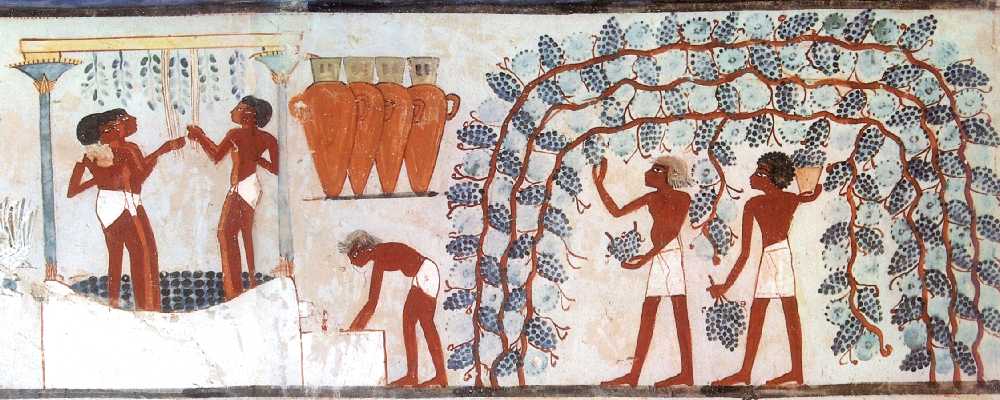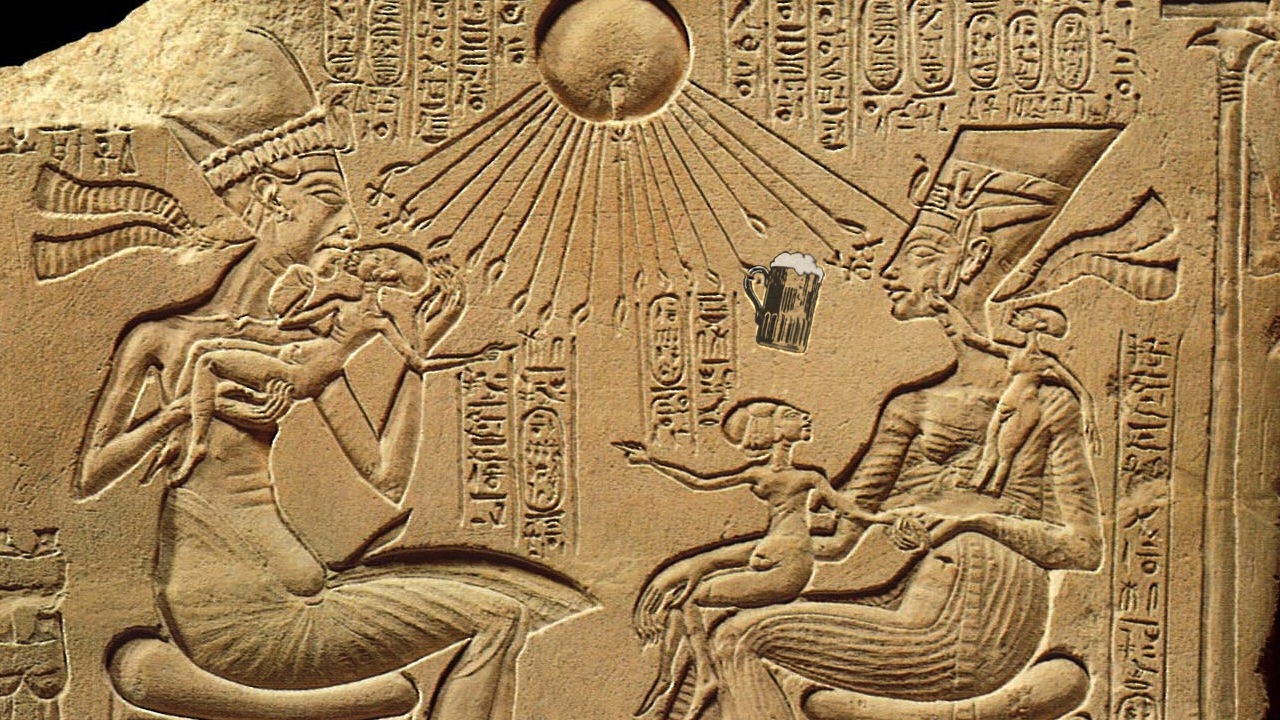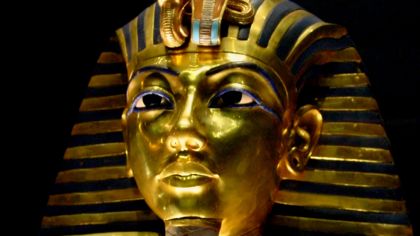51: Beer in Ancient Egypt
42: The “Boy King” Tutankhamun
23: King Tut and Beyond
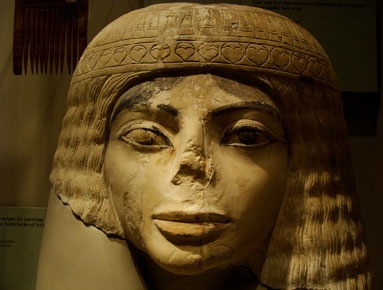 Hey all you people out there. It seems that I’m not the only one to have noticed the crazy resemblance between that one Egyptian statue at the Field Museum and … oh … the most famous entertainer in the history of the world, Michael Jackson. The press also caught wind of the same likeness early this month and the web has been lit up with articles and blog posts. If you want to check it out yourself, I’ve put together a collection of many links at ancientartpodcast.org in the Additional Resources section under the blog post “Ancient Egyptian Michael Jackson look-alike.”
Hey all you people out there. It seems that I’m not the only one to have noticed the crazy resemblance between that one Egyptian statue at the Field Museum and … oh … the most famous entertainer in the history of the world, Michael Jackson. The press also caught wind of the same likeness early this month and the web has been lit up with articles and blog posts. If you want to check it out yourself, I’ve put together a collection of many links at ancientartpodcast.org in the Additional Resources section under the blog post “Ancient Egyptian Michael Jackson look-alike.”
My wife and I went to the Field Museum last weekend to see the “Pirates” exhibition, and while we was there I took a few new photos of the Egyptian statue. Added bonus, we got our names stamped in Egyptian hieroglyphs, but I was a jerk and made them redo her name, because they spelled it wrong.
Like the gallery label in the Field Museum says, the statue is of a woman from the New Kingdom. That’s pretty vague, but if you look at it closely, you’ll notice that the facial characteristics and headdress bear some resemblance to the topic at hand in recent episodes, the Amarna period. Those sharp almondine eyes, deep eyelids, large full lips, high cheekbones, and exaggerated eyebrows all indicate the influence of the Amarna period following the reign of the heretic king Akhenaten. Plus the wig favors the fashion of the time.
Last time in episode 22, “Nefertiti, Devonia, Michael,” in our discussion of Lorraine O’Grady’s contemporary works Miscegenated Family Album and Nefertiti/Devonia Evangeline, we briefly briefly talked about the family of Akhenaten and Nefertiti and touched on the line of kings following Akhenaten. It gets a little confusing late in Akhenaten’s reign. Did Nefertiti rule alongside him as coregent? Was there another male king on the scene? Did one of Akhenaten’s daughters assume the throne for a while? How many kings were there between Akhenaten and Tut? These questions continue to be debated, as can be seen in the latest issue of KMT magazine, the Fall 2009 issue, volume 20, number 3, in Aidan Dodson’s article “Were Nefertit & Tutankhamun Coregents?” Your head can really spin around if you think too hard about this. It’s like trying to solve a jigsaw puzzle without the picture on the box and only half the pieces.
Looking at what we do have, though, we see evidence of a somewhat turbulent transition from heretical Atenism back to orthodoxy, but it’s not a complete return. The Amarna period has a lasting impact on Egyptian art, giving rise to what’s sometimes dubbed the post-Amarna period, or more romantically the “legacy of Amarna.”
You might be familiar with this all-too-famous throne from the tomb of King Tut, which can be yours now for only $895 plus $39 shipping and handling direct from SkyMall. The original of this magnificent work of Ancient Egyptian artistry is now in the Egyptian Museum in Cairo. There are countless spectacular things about it, but one interesting nuance to zero in on is the inscription. The chair must have been produced very early in the reign of King Tut. We can tell because he’s referred to by his early throne name, Tutankhaten, with his wife Ankhesenpaaten, third daughter of Akhenaten and Nefertiti. About a year into his reign, Tut changed his name from Tutankhaten to the more familiar Tutankhamun, which means the “living image of Amun,” and his queen changed her name from Ankhesenpaaten to Ankhesenamun, or if you’re Boris Karloff, that’s “Ankhsenamun” (1). Of course, at the time, Tut was only about 10 years old, so the notion that he made any decisions on his own other than which toy to play with today might be a little far fetched. More likely the name change was imposed on the boy king by his vizier Ay and other advisers like general Horemheb to win favor with the bitter and previously disenfranchised temple of Amun. “No, really, we were on your side the whole time. Yeah, that’s the ticket!”
Stylistically, the decoration of the chair also shows a strong entrenchment in the Amarna period, not only with the subject matter of the solar disk Aten shining down on the royal couple, but in the figures themselves, with their long slender limbs, sharp almondine eyes, large heads, elongated torsos, and cute little paunches. These characteristic Amarna features gradually soften in the arts, becoming less pronounced as time marches on. Some works of art well into the following 19th dynasty, the time of those bijillion Ramses’s, continue to show strong vestiges of the Amarna style, which we will examine in a minute, but one final note that deserves recognition is the coloration of their skin.
King Tut is represented with the customarily dark skin of Ancient Egyptian men, but so is his queen. Egyptian women are traditionally shown with lighter skin than men. The typical explanation for this is that men worked outdoors all day, so they had tan skin, whereas women worked indoors all day, didn’t tan as much, and are therefore traditionally shown with fairer skin. That argument is also usually put forth against skin color as an indicator of heredity. Well, permit me to get a little cynical, but that’s a prime example of art historical chauvinism getting in the way visual interpretation. Translation: look before you leap. There are many works of art from throughout Egyptian history where it’s safe to interpret racial type being expressed through skin color among other features. God forbid the Egyptians practiced mixed marriage as far back as 2600 BC, as evidenced in the statues of Rahotep and Nofret from the 5th Dynasty in the Egyptian Museum in Cairo. What continues to hold public interpretation back from a more realistic, diverse perspective of the Ancient Egyptians are the sweeping blanket statements that often find their way into the press, along the lines of “[Ancient] Egyptians are not Arabs and are not Africans despite the fact that Egypt is in Africa” (2). The issue’s not black or white. So, was Ankhesenamun a tomboy, spending more time outdoors than a proper young Egyptian lady should, or were she and Tut both of a more southern Egyptian heritage, closer to Nubian? Well, that’s a can of worms we don’t have time to get into, but if you want a nice synopsis of the whole issue, check out the 20-year-old article by Frank Yurco “Were the Ancient Egyptians Black or White?” in the September/October 1989 issue of the Biblical Archaeology Review or BAR. You’ll find a link to the full text article in the bibliography at ancientartpodcast.org.
And then from some 20 to 100 years after the reign of King Tut comes this Lintel and Cornice from the Tomb of Iniuia and Yui at the Art Institute of Chicago. The dating is a little conflicted. The Art Institute dates the lintel to 19th dynasty during the reign of Ramesses II, 1279-1212 BC, but most scholarship seems to peg Iniuia and Yui to the reign of Horemheb, 1323-1295 BC. A lintel is simply the top of a doorway. The cornice here refers specifically to the characteristic Egyptian cavetto cornice with torus molding. The cavetto cornice is the classic, striped, flaring top section of a doorway and the torus molding is the protruding rounded ledge between the cornice and figural decoration. The cavetto cornice and torus molding both likely have their roots in traditional reed vegetal architecture translated into stone.
This piece was originally located above a doorway in the tomb of Iniuia and Yui from Saqqara. We don’t know a whole heck of a lot about them. Iniuia is the husband and Yui is his wife. In the inscription on this fragment, Iniuia is referred to by the title “Overseer of the Treasury of Silver and Gold of the Lord of the Two Lands.” At some later point in his career, he gets the titles “Overseer of the Cattle of Amun” and “Royal Scribe and Chief Steward of the Great Palace” and Yui is referred to as the “Lady of the House, the Chanteress of Amun,” which we see on their darling little double shawabty coffin lid from the MFA in Boston, which I had the pleasure of seeing in person for the first time just a couple weeks ago and snapped this lame cell phone picture.
What we are really interested in with the lintel, though, is the Amarna influence. We see Iniuia and Yui supplicating before Osiris and Isis, their hands raised in prayer, so this is clearly after the Amarna period, since the orthodox gods have been reintroduced. But look closely at Iniuia and Yui. Notice their slender limbs, elongated torsos, protruding chins, pronounced cheekbones, sharp almondine eyes, and their little potbellies. Note also how the artists has seemingly rendered a straight line from the tips of their noses to the peak of their foreheads. These are all very distinctive traits developed during the Amarna period. Even upwards of 50 years or more after the reign of the heretic king Akhenaten, after the radical transformation of Egyptian art, religion, and society, then after the rampant, vehement, passionate movement to eradicate all traces of the previous order and restore Egypt to its orthodox religious traditions, we still continue to see a lasting artistic influence of the monumentally influential Amarna period.
Thanks to all, who have been sending feedback. I appreciate you taking the time and making the good suggestions. If you want to be part of the cool crowd too, you can give feedback on the website and fill out a fun little survey. If you have any questions you’d like me to discuss in future episodes, you can also email me at info@ancientartpodcast.org. You can comment on each episode on the website or on YouTube. And if you like the podcast, why not share the love with some iTunes comments? It helps to get the podcast noticed. Lastly, you can follow me on Twitter at lucaslivingston. Thanks for listening and we’ll see you next time on the Ancient Art Podcast.
©2009 Lucas Livingston, ancientartpodcast.org
Footnotes:
1. Pharaohs of the Sun: Akhenaten, Nefertiti, Tutankhamen. Exhibition catalog edited by Rita E. Freed, Yvonne J. Markowitz and Sue H. D’Auria, Boston: Museum of Fine Arts in association with Bulfinch Press/Little, Brown, and Co., 1999, page 180.
2. “Hawass Says That Tutankhamun Was Not Black.” Touregypt.net. 2007-9-26. Retrieved 8-18-2009.
Image Credits
1. Statue head of a woman, limestone, New Kingdom, Field Museum of Natural History, Chicago (31713), photo by Lucas Livingston.
…
1. Comparison of Field Museum Statue head of a woman and Statue of an unknown Amarna-era princess. New Kingdom, Amarna period, 18th dynasty, ca. 1345 BC Egyptian Museum (21223), Berlin, photo by Keith Schengili-Roberts, 15 Dec 2006.
2. Chair of Tutankhamun, 18th dynasty, Egyptian Museum, Cairo.
3. Chair of Tutankhamun (detail), 18th dynasty, Egyptian Museum, Cairo.
4. Chair of Tutankhamun (detail), 18th dynasty, Egyptian Museum, Cairo, photo by Richard Seaman.
5. Chair of Tutankhamun (detail), 18th dynasty, Egyptian Museum, Cairo, photo by Pataki Márta.
6. Chair of Tutankhamun (detail), 18th dynasty, Egyptian Museum, Cairo, photo by Jerzy Strzelecki.
7. Golden Mask of Tutankhamun, Egyptian Museum, Cairo.
8. Cartouche of Tutankhamun.
9. Cartouche of Tutankhaten.
10. Boris Karloff as Imhotep from The Mummy, Universal Pictures, 1932.
11. Decorated Balustrade Fragment, Amarna, Great Palace, Dynasty 18, reign of Akhenaten, 1353-1336 BC, Crystalline limestone, Egyptian Museum, Cairo, JT 30/10/26/12.
12. Lintel and Cornice from the Tomb of Iniuia and Yui, New Kingdom, Dynasty 18 or 19, reign of Horemheb (1323-1295 BC) or Ramesses II, (c. 1279-1212 B.C.), The Art Institute of Chicago, Gift of Henry H. Getty, Charles L. Hutchinson, Robert H. Fleming, and Norman W. Harris, 1894.246.
13. Lintel and Cornice from the Tomb of Iniuia and Yui, photo by Lucas Livingston, 21 August 2009.
…
1. Wall Fragment from the Tomb of Amenemhet and His Wife Hemet, Middle Kingdom, Dynasty 12 (1976-1794 BC), The Art Institute of Chicago, Museum Purchase Fund, 1920.262.
2. Scene depicting the procession of funerary offerings from the tomb of Amenemhet, senior officer during the reign of Thutmose III, Dynasty 18 (1479-1425 BC) from The Yorck Project: 10,000 Meisterwerke der Malerei. DVD-ROM, 2002. ISBN 3936122202. Distributed by DIRECTMEDIA Publishing GmbH.
3. Head of Queen Tiy, Egyptian Museum, Berlin.
4. Shawabtys of King Taharqa, Nubian, Napatan Period, reign of Taharqa, 690-664 BC, Museum of Fine Arts, Boston.
5. Statues of Rahotep and Nofret, Dynasty 4, reign of Sneferu (2575-2551 BC), Egyptian Museum, Cairo.
6. Ka statue of Rahotep, Dynasty 4, reign of Sneferu (2575-2551 BC), Egyptian Museum, Cairo, photo by Jon Bodsworth, 10 December 2007 (egyptarchive.co.uk).
7. Ka statue of Nofret, Dynasty 4, reign of Sneferu (2575-2551 BC), Egyptian Museum, Cairo, photo by Jon Bodsworth, 10 December 2007 (egyptarchive.co.uk).
8. Temple of Philae, Description de l’Egypte, Ile de Philae – A. vol. 1, pl. 18, 1809.
9. Lid for double shawabty coffin [of Iniuia and Yui], New Kingdom, Dynasty 18, reign of Horemheb (1323-1295 BC), Museum of Fine Arts, Boston, William Francis Warden Fund, 1977.717.
10. Lid for double shawabty coffin of Iniuia and Yui, photo by Lucas Livingston, 12 August 2009.
11. Bust of Queen Nefertiti, Dynasty 18, reign of Akhenaten (1351-1336 BC), Egyptian Museum, Berlin, photo by Magnus Manske, 28 December 2005.
Ancient Egyptian Michael Jackson Look-alike
Ancient Egyptian Michael Jackson Look-alike:
All links last retrieved on August 30, 2009.
Online media coverage:
• “Egyptian statue ‘looks like Jackson.’” Yahoo News 2009-8-8.
• Gilmer, Marcus. “Michael Jackson = Ancient Egyptian?.” Chicagoist.com 2009-8-5.
• “Egyptian Statue Looks Just Like Michael Jackson!” Media Outrage. 2009-8-6.
• Sneed, Michael. “Did Michael Jackson model face after Egyptian bust?” Chicago Sun Times. 2009-8-5.
• “The Top 3 Exhibits at Chicago’s Field Museum.” Speaking-up.com.
• “Egyptian Statue Totally Looks Like Michael Jackson.” Totallylookslike.com. 2009-6-2.
• “The Pharaoh of Pop?” Discovery Channel. 2009-8-12.
• “Statue Thrills Jackson Fans.” iafrica.com. 2009-8-8.
Other online articles related to Episode 23 “King Tut and Beyond”:
• “Hawass says that Tutankhamun was not black.” Touregypt.net. 2007-9-26.
• Yurco, Frank J. “Were the Ancient Egyptians Black or White?” BAR 15.5 (Sep/Oct) 1989.
(Full text available online here.)
YouTube and other related video media:
• “Michael Jackson – The Pharaoh of Pop ???” 2009-8-7. Cool morphing faces.
22: Nefertiti, Devonia, Michael
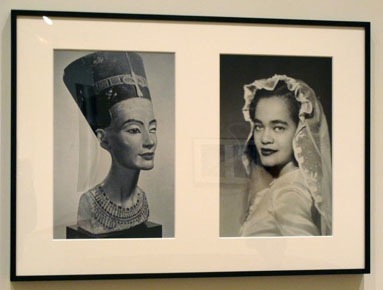 On October 31, 1980 at Just Above Midtown Gallery in New York City, artist Lorraine O’Grady, dressed in a long red robe, debuted her new work of performance art. On a dark stage with a slideshow backdrop and dramatic recorded narration, O’Grady enacted hypnotic, ritualized motions, like the priestess of an ancient mystery cult, incanting magicks over vessels of sacred sand and offerings blessings of protection to the projected images of the Ancient Egyptian Queen Nefertiti and her late sister Devonia Evangeline O’Grady Allen. In the piece entitled Nefertiti/Devonia Evangeline, Lorraine O’Grady confronted her relationship with her sister through the lens of Nefertiti and Nefertiti’s own apparent sister, Mutnedjmet — a relationship which O’Grady felt would have been equally troubled. O’Grady’s sister Devonia tragically died just a few short weeks after the two of them had finally begun speaking after many years of a strained relationship.
On October 31, 1980 at Just Above Midtown Gallery in New York City, artist Lorraine O’Grady, dressed in a long red robe, debuted her new work of performance art. On a dark stage with a slideshow backdrop and dramatic recorded narration, O’Grady enacted hypnotic, ritualized motions, like the priestess of an ancient mystery cult, incanting magicks over vessels of sacred sand and offerings blessings of protection to the projected images of the Ancient Egyptian Queen Nefertiti and her late sister Devonia Evangeline O’Grady Allen. In the piece entitled Nefertiti/Devonia Evangeline, Lorraine O’Grady confronted her relationship with her sister through the lens of Nefertiti and Nefertiti’s own apparent sister, Mutnedjmet — a relationship which O’Grady felt would have been equally troubled. O’Grady’s sister Devonia tragically died just a few short weeks after the two of them had finally begun speaking after many years of a strained relationship.
Inspired two years later after a trip to Egypt, O’Grady began researching Queen Nefertiti and her famed family of the Amarna Period. While in Egypt, O’Grady encountered a new found feeling of belonging — as the artist says in her own words, “surrounded for the first time by people who looked like me” (Art Journal 56:4, Winter 1997, p. 64). Of African, Caribbean, and Irish descent, O’Grady never felt a similar sense of kinship in her homes of Boston and Harlem. In a New York Times article from September 26, 2008, “she remembers her youthful efforts to balance what she has called her family’s ‘tropical middle-and-upper class British colonial values’ with the Yankee, Irish-American and African-American cultures around her.” Building on a resemblance that she long thought her sister had with Nefertiti, she was struck by what she saw as narrative and visual resemblances throughout both families. While pairing members of her own family with those of Nefertiti, O’Grady weaves together various narratives connecting personal stories with historical events (Alexander Gray Associates press release, 10 Sep 2008).
In 1994, from the performance piece Nefertiti/Devonia Evangeline originally composed of 65 photographic comparisons, O’Grady took about a fifth of the diptychs and framed them in an installation piece entitled Miscegenated Family Album, which has been exhibited in various galleries, including the Art Institute of Chicago in 2008. O’Grady’s work often focuses on black female identity and subjectivity, as well as cultural and ethnic hybridization. Miscegenation, in the title of the piece, is the procreation between members of different races, which was still illegal in much of the US as late as 1967, when it was finally overturned by the Supreme Court.
The ethnic identities of Nefertiti and Akhenaten have been debated in the spheres of Egyptology and African studies, with no immediate end in sight. Not quite as much as Cleopatra, but still. In Nefertiti/Devonia Evangeline and Miscegenated Family Album, O’Grady directly confronts the racism of a white-dominated, Western-European interpretation to the field of Egyptology. While the notion of a black African cultural and ethnic influence on Ancient Egypt is frequently discussed today, we should bear in mind that in 1980, when O’Grady first performed Nefertiti/Devonia Evangeline, this was still seven years before the publication of Martin Bernal’s highly acclaimed and criticized work Black Athena: The Afroasiatic Roots of Classical Civilization.
Now, I’m not saying that the sub-Saharan African influence on Egyptian civilization is definitively confirmed. It’s still a hotly debated issue with many shades of gray. Ancient Egypt was a huge nation surviving thousands of years. And during that time there was frequent contact with surrounding countries, including periods of foreign occupation. By the time of Nefertiti and Akhenaten in the mid to late 14th century BC, parts of Egypt were pretty ethnically diverse, which likely got even more ethnically diverse as the centuries led up to the Ptolemaic period of Cleopatra. I’m excited to see that the University of Manchester museum will be hosting a conference on “Egypt in its African Context” on October 3rd and 4th, 2009. You can read about the conference online. The URL’s kinda long: www.museum.manchester.ac.uk/collection/ancientegypt/conference. [As of at least 12/22/2010, this link is no longer active. Visit http://egyptmanchester.files.wordpress.com/2009/08/egypt-in-its-african-context-programme1.pdf for a PDF of the conference agenda. Visit http://egyptmanchester.wordpress.com/2010/08/07/sally-ann-ashton-talking-at-the-manchester-museum-at-the-conference-egypt-in-its-african-context-3-4-october-2009/ for videos.] So, check out the transcript at ancientartpodcast.org for the link or see my recent tweet on Twitter at “lucaslivingston.”
One point that we need to bear in mind when considering the ethnicity of Ancient Egyptians is the baggage we bring with us to the discussion. We all have a lot of baggage, but what I’m specifically talking about is the whole preoccupation with ethnicity. I don’t know about kids these days, but not too long ago when I was a wee lad, every American schoolboy or girl could tell your their heritage, breaking it down by the percentage. Blame it on the African diaspora, Western imperialism, or Ellis Island, but I would argue that this obsession with the argument over whether the Ancient Egyptians were black, white, Greek, Berber, or other is something of a modern development. The Egyptians were an ethnically diverse lot and they would have said to us “So what!?” What mattered to the Egyptians was that you were Egyptian. You don’t hear of Ancient Egyptian race riots.
The beauty of O’Grady’s Miscegenated Family Album is that it looks more than skin-deep. O’Grady draws a few parallels between her sister Devonia and Nefertiti. They both marry, have daughters, and perform ceremonials functions — one as a priestess, the other as a bride. Devonia passed away at the age of 37 before the two sisters could fully reconcile their differences. Nefertiti suddenly vanished from the written record after the 12th year of Akhenaten’s reign, around the year 1341. Back in the 1980’s when O’Grady was researching for her performance piece Nefertiti/Devonia Evangeline, the prevalent theories for Nefertiti’s disappearance involved her death or fall from grace, perhaps due to Akhenaten elevating another consort to Great Royal Wife. Akhenaten did, in fact, elevate someone else to be the Great Royal Wife at that time — his eldest daughter Meretaten.
Nefertiti may have died, or some argue that she was elevated to co-regent, like a king-in-training. Another theory is that Akhenaten’s fourth daughter, Neferneferuaten Jr., became co-regent. She’s junior, because another one of Nefertiti’s names was also Neferneferuaten, and since the co-regent was named Neferneferuaten … well, hence the confusion as to exactly who was co-regent. After the death of Akhenaten around 1336 BC, we then have king Smenkhkara, ruling just a short while before our boy King Tut came onto the scene.
Another parallel that O’Grady draws is between herself and Neferitit’s apparent younger sister Mutnedjmet. Just as the younger O’Grady was left behind after her sister’s sudden and tragic passing, Mutnedjmet would also have been abandoned after Nefertiti’s sudden disappearance, according to the theories at the time. Just to bring everything else up to current theory, contrary to popular speculation, there’s no evidence that Nefertiti’s sister is the same Mutnedjmet, who was queen to the later king Horemheb. Also the more widely accepted translation today of Nefertiti’s sister’s name is Mutbenret, which is spelled exactly the same in hieroglyphs. But those are both minor technicalities that have little to no impact on O’Grady’s overall work. The importance of Nefertiti/Devonia Evangeline and Miscegenated Family Album is that the immediate physical resemblance in the framing of O’Grady’s family members with figures of ancient history is indicative of deeper sentiment and associations. The past becomes an idealized and humanized film through which our own lives are filtered and compared.
So much comparison between these ancient and modern figures compels me to draw one comparison from my own imagination …
[…]
Keep on moon walking, Michael, in the great beyond.
You’ll find a whole lotta great links about Lorraine O’Grady and her work at ancientartpodcast.org. Click on Additional Resources and scroll down to the post prominently titled “Lorraine O’Grady.” If you’re interested in seeing Miscegenated Family Album in person, Lorraine O’Grady has posted on her own blog that it should be installed in the Art Institute of Chicago’s new Modern Wing some time in the near future, and I have an unconfirmed corroborating report from unnamed sources. But if you want to find out for yourself, over at ancientartpodcast.org among the additional resources on O’Grady, you’ll find a link to the Art Institute’s online collection record for Miscegenated Family Album, which tells you whether or not the work is on display.
You can follow me on Twitter at lucaslivingston. If you have any questions you’d like me to discuss in future episodes, be sure to email me at info@ancientartpodcast.org. You can also give feedback on the website and fill out a fun little survey. You can comment on each episode on the website or on YouTube. And if you like the podcast, why not share the love with some iTunes comments? It helps get the podcast noticed. Thanks for listening and we’ll see you next time on the Ancient Art Podcast.
©2009 Lucas Livingston, ancientartpodcast.org
1. Lorraine O’Grady, Nefertiti/Devonia Evangeline: “Stirring sand, closeup.” 1980.
2. … “Told to swing an incense censer, she stirs sand instead.”
3. … “Instead of a ‘beef heart’ described on the soundtape, she lifts a heart of sand.”
4. … “I open your mouth for you.”
5. … “You are protected, and you shall not die.”
6. … “The voice on the tape says: ‘Mount and straddle tubs of sand, which are now touching…face audience.’”
7. Lorraine O’Grady, Miscegenated Family Album: Sisters I (L: Nefertiti, R: Devonia), 1980/94.
8. Lorraine O’Grady, Miscegenated Family Album: Sisters II (L: Nefertiti’s daughter Merytaten, R: Devonia’s daughter Candace), 1980/94.
9. Lorraine O’Grady, Miscegenated Family Album: Sisters III (L: Nefertiti’s daughter Meketaten, R: Devonia’s daughter Kimberley), 1980/94.
10. Lorraine O’Grady, Miscegenated Family Album: Sisters IV (L: Devonia’s sister Lorraine, R: Nefertiti’s sister Mutnedjmet), 1980/94.
11. Lorraine O’Grady, Miscegenated Family Album: Ceremonial Occasions I (L: Devonia as Matron of Honor, R: Nefertiti performing a lustration), 1980/94.
12. Lorraine O’Grady, Miscegenated Family Album: Ceremonial Occasions II (L: Devonia attending a wedding, R: Nefertiti performing an Aten ritual), 1980/94.
13. Lorraine O’Grady, Miscegenated Family Album: A Mother’s Kiss (T: Candace and Devonia, B: Nefertiti and daughter), 1980/94.
14. Lorraine O’Grady, Miscegenated Family Album: Motherhood (L: Nefertiti, R: Devonia reading to Candace and Edward, Jr.), 1980/94.
15. Lorraine O’Grady, Miscegenated Family Album: Young Princesses (L: Nefertiti’s daughter Ankhesenpaaten, R: Devonia’s daughter Candace), 1980/94.
16. Lorraine O’Grady, Miscegenated Family Album: Worldly Princesses (L: Nefertiti’s daughter Merytaten, R: Devonia’s daughter Kimberley), 1980/94.
17. Lorraine O’Grady, Miscegenated Family Album: Crowned Heads (L: Nefertiti’s husband Akhenaten, R: Devonia’s husband Edward), 1980/94.
18. Lorraine O’Grady, Miscegenated Family Album: Young Queens (L: Nefertiti, aged 24, R: Devonia, aged 24), 1980/94.
19. Lorraine O’Grady, Miscegenated Family Album: Progress of Queens (L: Nefertiti, aged 35, R: Devonia, aged 36), 1980/94.
20. Lorraine O’Grady, Miscegenated Family Album: Cross-Generational (L: Nefertiti, the last image, R: Devonia’s daughter Kimberley), 1980/94.
21. Lorraine O’Grady, Miscegenated Family Album: Hero Worship (L: Devonia and 14 and Lorraine at 3, R: Devonia at 24 and Lorraine at 13), 1980/94.
22. Lorraine O’Grady, Miscegenated Family Album: Sibling Rivalry (L: Nefertiti, R: Nefertiti’s sister Mutnedjmet), 1980/94.
23. Lorraine O’Grady, Miscegenated Family Album: Sisters I (L: Nefertiti, R: Devonia), 1980/94, one of set of sixteen silver dye bleach print diptychs, framed; edition five of eight, 67.3 x 95.3 cm (26 1/2 x 37 1/2 in.) each, Art Institute of Chicago: Through prior bequest of Marguerita S. Ritman, 2008.81.1-16.
…
1. Stela of the Royal Family, probably from Amarna, Dynasty 18, reign of Akhenaten, 1351-1336 BC, Limestone, Egyptian Museum, Berlin, 14145.
2. Chair of Tutankhamun and Queen Ankhesenamun.
3. Golden Mask of Tutankhamun, Egyptian Museum, Cairo.
4. Head of Queen Tiy, Egyptian Museum, Berlin.
5. Colossal Head of Akhenaten, Egyptian Museum, Cairo.
6. Right-hand sided tomb statue of Tutankhamun, Egyptian Museum, Cairo.
7. Statue of an unknown Amarna-era princess. New Kingdom, Amarna period, 18th dynasty, ca. 1345 BC Egyptian Museum (21223), Berlin, photo by Keith Schengili-Roberts, 15 Dec 2006.
8. Statue of King Horemheb with the god Amun, Egyptian Museum of Turin, photo by Jean-Pierre Dalbera, 14 Sep 2008.
9. Small head of a princess, probably Amarna period, Louvre Museum (E14715).
10. Statue head of a woman, limestone, New Kingdom, Field Museum of Natural History, Chicago (31713), photo by Lucas Livingston.

